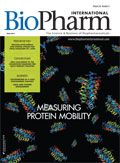Report from Brazil
Prior to price escalation of pharmaceutical products in Brazil, the country's regulatory authority released a study on price-cap control and its benefits in the past years.
Brazil's regulatory chamber of pharmaceutical products market (Anvisa-CMED) has authorized pharmaceutical products in the country to have prices adjusted by up to 6.31% starting on March 31, 2013, according to Anvisa, an agency that monitors drug prices and gives technical support for the definition of drug prices. One of the agency's attributions is the Executive Secretariat of the Drug Market Regulation Chamber (CMED), which is an interministerial body responsible for drug market regulation and for establishing criteria of drug prices definition and their adjustments.
Anvisa, led by the Ministry of Health, has set percentages for raising the price of antibiotics, anti-inflammatory agents, diuretics, and other drugs. Homeopathic and naturopathic products are not subject to such price increase. The cap-price determined will be frozen either for a one-year period or until March 2014. According to the Brazilian Pharmaceutical Wholesalers Association (Abafarma), the percentages vary between 2.70%, 4.59%, and 6.31%, and were stipulated based on the market share of each product in the local market in comparison with generic brands of the same drug. As Abafarma executives note, the only products in Brazil to have price controls are pharmaceutical drugs.

FLAVIO CONCEIÃÃO FOTOS/FLICKR/GETTY IMAGES
Price-cap regulation
Since 2003, Anvisa's regulatory chamber has managed price controls of pharmaceutical drugs commercialized in Brazil by setting price-cap standards. The "production" price-cap defines the maximum wholesale price at which a pharmaceutical drug may be sold in the Brazilian market, while the "consumer" price-cap is the maximum price at which it can be sold to the customer at drugstores and pharmacies around the country.
The regulatory authority defines the maximum price of pharmaceutical drugs through CMED's Resolution 2/2004. New drugs entering the market will be put in categories and priced according to their use and scientific evidence according to the regulatory authority. When considering the price-cap for new pharmaceutical products, the local authority will also evaluate the lowest international price for that product using certain countries as a parameter, including the country where the drug was produced, as well others such as the United States, Canada, Spain, Italy, Portugal, Greece, France, Australia, and New Zealand.
Control benefits
The study, released in January 2013 by Anvisa, analyzed pricing standards in the past years and concluded that the current pricing regulation has enabled Brazilians to purchase pharmaceutical drugs at prices that are on average 35% lower than the values initially requested by the pharmaceutical industry. The study analyzed cap-prices established by CMED between March 2004 and December 2011 for 1115 formulae/presentations and 433 pharmaceutical drugs.
According to the management of Anvisa, the prices of pharmaceutical drugs entering the Brazilian market ended up lower than those presented to Anvisa by pharmaceutical companies because of the established price-cap market regulation, which impeded companies from charging higher values. The study evaluated the prices of pharmaceutical products containing new molecules, drugs to be sold in new pharmaceutical forms, and new associations for known active ingredients. The study showed that new associations of active ingredients already existing in the country and drugs in new pharmaceutical forms (category V) had a difference of 38% between the final price and the price requested by the industry. Other pharmaceutical products that could not be included in any category established by the government had their prices "reduced" by an average of 35% and 45%.
For products carrying innovative molecules patented in Brazil and those that have been proven to offer therapeutic benefits compared with drugs already being applied for the same use (category I), the study showed that the final cap-price was on average 19% lower than the value requested by the pharmaceutical industry, Anvisa stated. Other new products that were not patented in the country, or that had not been proven to offer therapeutic benefits (category II), had a reduction of 37% on average compared with the original price suggested.
Study details
Of all the pharmaceutical drugs studied, 45.03% were category II products. New associations of active ingredients already existing in the country and drugs in new pharmaceutical forms (category V) made up 36.72% of all products analyzed. Drugs carrying innovative molecules patented in Brazil and that have been proven to offer therapeutic benefits compared with drugs already being applied for the same use totaled to only 3.24% of all drugs studied. The other "unclassified" categories totaled to 15.01%, according to Anvisa. A relevant aspect of the study was on the number of foreign companies and Brazilian firms that were granted pharmaceutical authorizations by Anvisa for drugs carrying new molecules. According to data from the study, foreign capital firms represented nearly 82% of the total number of companies that had authorizations issued under categories I or II. However, the study showed that there were no domestic companies offering pharmaceutical drugs under category I.
Anvisa's original study is available at http://s.anvisa.gov.br/wps/s/r/b3ZE.
— Hellen Berger is a business writer based in São Paulo, Brazil.

VERAXA and Voyager to Create Combined Business for Advancing Pipeline of Next-Gen Cancer Therapies
April 23rd 2025The proposed business combination would create a publicly traded, clinical-stage biopharmaceutical company that will focus on developing a pipeline of next-generation cancer therapies.
Tokyo University of Science Research Team Explores Improved Delivery of Antisense Oligonucleotides
April 18th 2025Using cholesterol-modified oligonucleotides, the research team aims to improve the delivery of antisense nucleotide-based therapies for treating neurodegenerative diseases and brain cancers.